The Creation Myth in Ancient Egypt: Exploring the Origins of Life
The ancient Egyptian civilization, which thrived for over three millennia, had a rich and diverse religious belief system that included a wide array of creation myths. These myths provided an explanation for the origins of the universe, the gods, and humanity itself. They were not merely stories, but rather a fundamental aspect of Egyptian culture, religion, and world view. In this article, we will delve into the fascinating creation myths of ancient Egypt, starting with the myth of Atum and the primeval ocean, followed by the myth of Ra and the sun god, and concluding with the myth of Osiris and the eternal afterlife. Through exploring these myths, we will gain insight into the ancient Egyptians’ profound understanding of the mysteries of life and death, and their beliefs about the divine and the human spirit.
Contents
- The Importance of Creation Myths in Ancient Egypt
- The Myth of Atum and the Primeval Ocean
- The Myth of Ra and the Sun God
- The Myth of Osiris and the Eternal Afterlife
- Conclusion
-
Frequently Asked Questions
- What are creation myths?
- Why were creation myths important in ancient Egypt?
- What is the myth of Atum and the primeval ocean?
- Who is Ra in Egyptian mythology?
- What is the myth of Osiris and the eternal afterlife?
- Did the ancient Egyptians worship multiple gods?
- What was the purpose of mummification in ancient Egypt?
- Were creation myths passed down orally or through texts?
- What was the significance of the primeval ocean in Egyptian mythology?
- How did creation myths influence daily life in ancient Egypt?
- References
-
Frequently Asked Questions
- What is the significance of creation myths in ancient Egypt?
- Who is Atum and what is his role in Egyptian creation myth?
- How did Atum create gods and humans?
- What role does the primeval ocean play in the myth of Atum?
- Who is Ra and how does he relate to the sun?
- How did Ra become the supreme creator?
- What is the significance of Ra’s daily journey and the cycle of life?
- How do humans sustain Ra’s power?
- Who is Osiris and why is he significant in Egyptian mythology?
- What is the role of mummification and burial rituals in the myth of Osiris?
- References
- Read More
The Importance of Creation Myths in Ancient Egypt
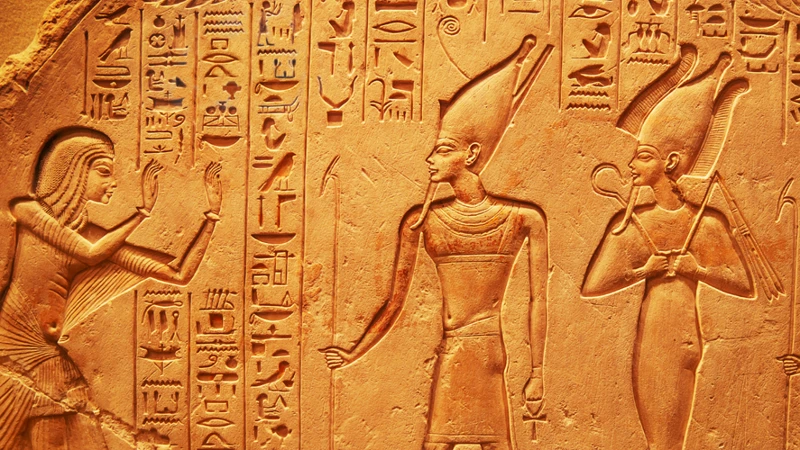
The importance of creation myths in ancient Egypt cannot be overstated. These myths served as the foundation of Egyptian cosmology and gave meaning and purpose to their existence. They provided the Egyptians with a framework for understanding the origins of life, the universe, and the gods. The creation myths helped to establish the divine order of the world and the roles of the gods and humans within it. They offered explanations for natural phenomena, the cycles of life and death, and the afterlife. By studying these myths, the Egyptians sought to gain insight into the mysteries of the universe and the nature of their own existence. These myths are still relevant in astrology, as they represent archetypal patterns and themes that continue to shape our understanding of the cosmos and the human experience. The creation myths were also intimately intertwined with religious rituals and practices. Temples were built to honor the gods and commemorate the creation of the world. Priests and priestesses performed elaborate ceremonies to invoke the presence of the gods and maintain cosmic balance. Through celebrating and retelling these creation myths, the ancient Egyptians sought to connect with the divine and ensure harmony and prosperity in their lives. The myths were not mere stories or legends; rather, they were a fundamental part of the Egyptian worldview and culture, shaping their beliefs, values, and actions. To truly understand ancient Egyptian civilization, one must delve into the rich tapestry of their creation myths and appreciate their profound significance in shaping their understanding of the cosmos and their place within it.
The Myth of Atum and the Primeval Ocean
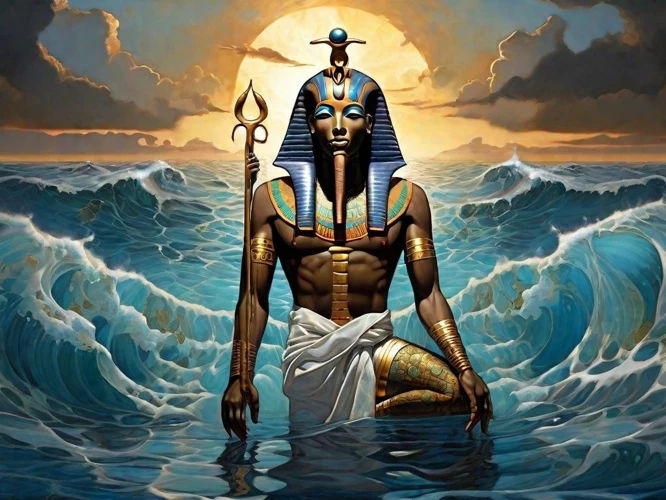
In the myth of Atum and the primeval ocean, Atum is regarded as the first god and the creator of the universe. At the beginning of time, the universe existed in a chaotic state, represented by the vast expanse of the primeval ocean, known as Nun, or Nu. Atum emerged from the waters of Nun, bringing order and stability to the cosmos. This myth highlights the interconnectedness between the elements of water and creation, emphasizing the significance of water as a life-giving force. Atum’s act of self-creation symbolizes the process of creation itself, reflecting the ancient Egyptians’ belief in the cyclical nature of life and the power of regeneration. Through this myth, the concept of eternal existence is introduced, as Atum is both the first and the last, encompassing all aspects of creation. The primeval ocean, which Atum emerged from, represents the potential for creation and serves as a reminder of the fundamental role of water in sustaining life. This captivating myth not only lays the foundation for the Egyptian cosmology but also offers profound insights into their understanding of the origins of existence and the forces that shape the world.
Atum and the Formation of the Universe
Atum, the creator god in ancient Egyptian mythology, played a pivotal role in the formation of the universe. According to the creation myth, Atum emerged from the primordial waters of chaos known as the Nu. With his divine will and ultimate power, Atum brought about the creation of the world as we know it. This process of creation was often depicted as Atum’s act of self-generation. Atum was believed to have separated the earth (Geb) from the sky (Nut), forming the space in which life could flourish. This act of division was not only physical but also symbolic, representing the establishment of order and the separation of opposites. The creation of the universe by Atum was not a solitary act; it involved the utilization of his immense wisdom and creative abilities. Atum’s power was infinite, transcending time and space. He was the divine force behind the cosmic cycles and the eternal birth and regeneration of life.
To visualize the process of creation, ancient Egyptian art often depicted Atum as a man wearing the double crown of Upper and Lower Egypt, holding the ankh symbol of life in one hand and the scepter of authority in the other. This imagery symbolized the pharaoh’s connection to Atum and the divine authority bestowed upon them. The concept of creation was not limited to the universe alone; it extended to all aspects of Egyptian life, including the birth and reign of each pharaoh, who was believed to be a living embodiment of the divine power of Atum.
Understanding the myth of Atum and the formation of the universe provides valuable insight into the ancient Egyptians’ perception of the cosmos and their place within it. It reflects their belief in the divine order, the cyclical nature of existence, and the symbiotic relationship between gods and humans. The myth of Atum also emphasizes the creative potential of the divine, inspiring Egyptians to harness their own creative abilities and strive for harmony and balance in their lives. Just like the ancient Egyptians, the Inca civilization also had a rich tradition of artistic expression, which played a significant role in depicting their mythological beliefs and understanding of the universe. Through exploring the myth of Atum, we gain a deeper appreciation for the sophisticated and complex cosmology of ancient Egypt and the profound impact it had on their culture and worldview.
Atum and the Creation of Gods and Humans
In the myth of Atum and the creation of gods and humans, we witness the emergence of the divine and human beings from the primordial chaos. Atum, often depicted as a self-created deity, is the central figure in this creation narrative. It is said that Atum arose from the primeval waters, known as Nun, through an act of self-fertilization or masturbation. This act symbolizes the divine creative power inherent within Atum. Through his sheer will and divine energy, Atum brought forth the gods and the world into existence. The air god Shu and the moisture goddess Tefnut were the first divine beings born from Atum. Shu, representing the breath of life, and Tefnut, representing moisture and order, provided the foundation for the universe to take shape. They, in turn, gave birth to Geb, the earth god, and Nut, the sky goddess. Geb and Nut would eventually become the parents of Osiris, Isis, Seth, and Nephthys, among others. This divine lineage formed the basis of the Egyptian pantheon, with each deity playing a distinct role in the cosmic order. Atum, as the progenitor of the gods, was revered as the creator and maintainer of all life. Similarly, the creation of humans was believed to be a direct result of Atum’s divine will. Egyptians believed that humans were made in the image of the gods and were bestowed with a spark of divinity. This belief emphasized the connection between the divine and the earthly realm, highlighting the inherent sacredness of humanity. The myth of Atum and the creation of gods and humans serves as a reminder of our divine origins and the interconnectedness of all beings in the cosmic web of existence.
The Role of the Primeval Ocean
The role of the primeval ocean in the creation myths of ancient Egypt was of paramount importance. It represented a chaotic and formless state that existed before the world and everything in it came into being. This primeval ocean, known as Nun, was viewed as a vast expanse of water that encompassed all of creation. It was believed to be the source of life and the ultimate origin of all existence. The ancient Egyptians believed that from the depths of Nun emerged Atum, the creator god. Atum was the divine force that brought order out of chaos and set in motion the formation of the universe. The primeval ocean symbolized the potential for creation and regeneration. It was seen as a fertile and nourishing force that gave rise to all life forms. This concept was closely associated with the flooding of the Nile River, which brought renewed fertility to the land and sustained the agricultural cycle that was vital for the survival of the Egyptian people. The primeval ocean also represented a threshold between the mortal world and the divine realm. It was believed to be a gateway through which the gods could travel and exert their influence on the earth. The primeval ocean played a crucial role in the creation myths of ancient Egypt, serving as a powerful symbol of both chaos and renewal, and underscoring the fundamental belief in the interconnection between the physical and spiritual realms.
The Myth of Ra and the Sun God
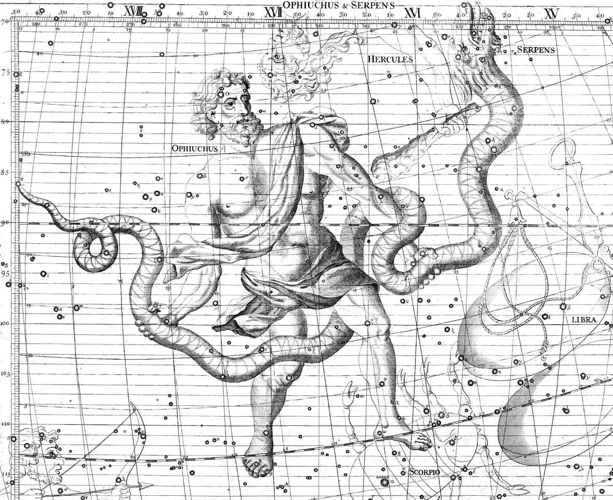
In ancient Egypt, the myth of Ra and the Sun God was of paramount importance. Ra, also known as Re, was the supreme creator and solar deity. According to the myth, Ra emerged from the primeval waters of the Nun and brought light and life to the world. Each day, Ra sailed across the sky in his solar barque, bringing daylight and warmth to the land. This daily journey symbolized the cycle of life, death, and rebirth. The myth emphasized the eternal nature of Ra’s power and the vital role of humans in sustaining it. The Egyptians believed that their actions, prayers, and offerings played a crucial part in ensuring the continued success of Ra’s journey and his ability to defeat the forces of chaos. It was through their devotion and loyalty that Ra would reward them with abundance and prosperity. This powerful myth of Ra and the Sun God reflected the fundamental beliefs of the ancient Egyptians about the divine order of the universe and the reciprocal relationship between humans and the gods.
Ra’s Emergence as the Supreme Creator
During the ancient Egyptian civilization, the myth of Ra played a pivotal role in understanding the emergence of the supreme creator. Ra, the sun god, was believed to be the ultimate source of life, light, and warmth. According to the myth, Ra emerged from the waters of Chaos, known as Nun, and brought order and creation to the world. His emergence symbolized the birth of existence and the beginning of the universe. Ra was typically depicted as a falcon-headed deity, representing his connection to the sky and his role as the ruler of all gods.
Ra’s ascension to the position of the supreme creator was not immediate but required a journey of self-discovery and confrontation with the forces of Chaos. In his journey, Ra embarked on a daily voyage in his solar boat across the sky, bringing light and warmth to the world. He encountered various challenges during his journey, such as the serpent Apep, who represented chaos and evil. Ra’s ability to overcome these obstacles solidified his position as the supreme creator and the bringer of order.
This myth served to explain the daily cycle of the sun and the importance of Ra in sustaining life on Earth. The ancient Egyptians believed that Ra’s power was intimately linked to the actions and behaviors of humans. They believed that by upholding Ma’at, the concept of cosmic balance and harmony, they could contribute to the continuation of Ra’s power and ensure the well-being of the world.
The myth of Ra’s emergence as the supreme creator highlights the significance of the sun in ancient Egyptian culture and the belief in the divine origins of life and light. It reflected their understanding of the celestial forces that governed the universe and the interconnectedness between the divine, natural, and human realms. Ra’s role as the supreme creator served as a source of inspiration, guiding the Egyptians to lead righteous lives and maintain balance in the world.
The myth of Ra’s emergence as the supreme creator showcases the complexity and intricacy of ancient Egyptian religious beliefs and cosmology. It paints a vivid picture of their reverence for the sun and their belief in the divine origins of existence and the order of the universe.
Ra’s Daily Journey and the Cycle of Life
In ancient Egyptian mythology, Ra, the sun god, embarked on a daily journey across the sky, bringing light and warmth to the world. This divine journey represented the cycle of life and the eternal nature of existence. Each day, Ra would rise in the morning, travel across the sky, and set in the evening, only to be reborn again the next day. This cyclical pattern mirrored the ebb and flow of life itself, with its moments of birth, growth, decline, and rebirth. Ra’s daily journey was seen as a metaphor for the journey of the soul through life and into the afterlife. Just as Ra traveled through the sky, the Egyptians believed that the soul traveled through various stages of existence, ultimately reaching the eternal realm of the afterlife. This belief in the cyclical nature of life and the continuity of existence brought comfort and reassurance to the ancient Egyptians, as it promised them that life was not finite, but rather part of an everlasting cosmic cycle. It also emphasized the interconnectedness of all living beings and the importance of harmony and balance within the natural world. The symbolism of Ra’s daily journey continues to resonate in Egyptian art and religious imagery, where he is often depicted in the form of a scarab beetle pushing the sun across the sky, representing the eternal cycle of life and the power of transformation. Through understanding Ra’s daily journey and the cycle of life, we gain insight into the Egyptians’ profound reverence for the natural world and their recognition of the interconnectedness of all living beings.
The Role of Humans in Sustaining Ra’s Power
The role of humans in sustaining Ra’s power was a central aspect of the ancient Egyptian belief system. According to the myth of Ra and the sun god, humans played a crucial role in the daily journey of Ra across the sky. It was believed that Ra relied on the prayers, offerings, and rituals of the pharaohs and priests in order to maintain his strength and continue his journey through the heavens. Humans were seen as both the supporters and beneficiaries of Ra’s power. By worshiping and honoring Ra, humans ensured the continuation of the solar cycle and the prosperity of their civilization. They believed that their actions directly impacted the well-being of the gods and the cosmic order. Pharaohs, as the divine rulers of Egypt, held a special responsibility in this regard. They were considered the earthly representatives of Ra and were tasked with maintaining the balance and harmony between the earth and the heavens. The pharaohs performed rituals and ceremonies in temples dedicated to Ra, offering prayers, incense, and valuable gifts to ensure the sun god’s favor. These rituals were seen as essential in sustaining Ra’s power and ensuring the fertility of the land, the abundance of crops, and the overall well-being of the Egyptian society. The belief in the role of humans in sustaining Ra’s power also extended to the common people, who were encouraged to engage in personal acts of worship and devotion. Individuals would offer prayers and make offerings to Ra in their homes or in local shrines, seeking his protection, guidance, and blessings. Through these practices, humans sought to establish a reciprocal relationship with the gods, recognizing the interconnectedness of human and divine forces in the maintenance of cosmic order.
The Myth of Osiris and the Eternal Afterlife
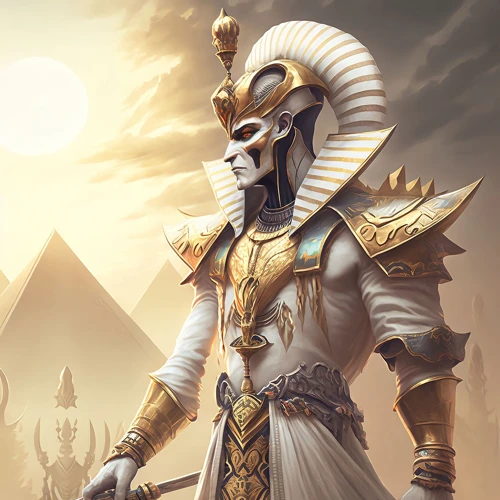
In ancient Egyptian mythology, the myth of Osiris and the eternal afterlife holds great significance. Osiris, the god of fertility, vegetation, and the afterlife, played a pivotal role in Egyptian religious beliefs. As the divine king, Osiris symbolized renewal, resurrection, and the cyclical nature of life. According to the myth, Osiris was betrayed and murdered by his brother Set, who sought to obtain power for himself. Osiris’s body was dismembered and scattered throughout Egypt, but through the love and dedication of his sister-wife Isis, he was eventually resurrected and became the ruler of the underworld. This myth served as a metaphor for the journey of the soul after death, offering hope for a blissful afterlife. It related not only to the physical preservation of the body through the practice of mummification and burial rituals, but also to the concept of moral judgment and the need for a virtuous life in order to achieve eternal happiness. The myth of Osiris and the eternal afterlife emphasized the importance of morality, justice, and righteousness in Egyptian society, as it was believed that the deceased would face judgment in the Hall of Maat, where their hearts would be weighed against the feather of truth. Those who were deemed worthy would be granted eternal life in the presence of Osiris, while those who failed the judgment would be condemned to eternal oblivion. This belief in an afterlife and the pursuit of moral living greatly influenced the daily lives and actions of the ancient Egyptians, who sought to align themselves with Osiris and attain eternal bliss in the underworld.
The Divine Kingship of Osiris
The Divine Kingship of Osiris was a central aspect of ancient Egyptian mythology and political ideology. Osiris, one of the most important gods in the pantheon, was not only associated with the afterlife and resurrection but also with kingship and the establishment of a just and prosperous society. In Egyptian mythology, Osiris served as the original king and ruler of Egypt, bringing civilization and order to the land. His role as the divine king was closely intertwined with the concept of ma’at, representing cosmic balance, truth, and justice. Osiris was believed to have introduced laws, agriculture, and religious rituals, providing guidance for the functioning of society. As the divine king, Osiris set the standard for future earthly kings, serving as an ideal model for rulership. His reign symbolized the importance of a just and benevolent ruler in maintaining ma’at and the well-being of the Egyptian people. The story of Osiris’ tragic death and resurrection also carried a significant metaphorical meaning. His murder by his jealous brother Seth and subsequent revival by his sister-wife Isis represented the cyclical nature of life and death, the eternal struggle between order and chaos, and the promise of rebirth and immortality. This myth emphasized the divine nature of kingship and the belief that a true pharaoh was a manifestation of Osiris on Earth, responsible for upholding ma’at and ensuring the prosperity and harmony of the kingdom. In this way, the Divine Kingship of Osiris held immense cultural and political significance, shaping the ideology and governance of ancient Egypt for centuries.
Osiris and the Cycle of Death and Rebirth
Osiris, a central figure in ancient Egyptian mythology, embodies the cycle of death and rebirth. According to the myth, Osiris was a benevolent god who ruled over Egypt in a golden age of prosperity and harmony. However, his jealous brother Set plotted against him out of fear and resentment. Set tricked Osiris into entering a coffin and sealed it shut, throwing it into the Nile River. This act symbolized the death of Osiris.
The myth of Osiris and the cycle of death and rebirth is portrayed through a series of events:
- Isis, the wife and sister of Osiris, tirelessly searched for his body. She eventually discovered the coffin washed ashore and brought it back to Egypt.
- Set, realizing Isis had found the body, grew enraged and dismembered Osiris, scattering his body parts throughout Egypt.
- Isis, with the help of her sister Nephthys, managed to gather the scattered body parts and reassemble Osiris.
- Through her magic, Isis brought Osiris back to life, and they conceived their son Horus, who would later seek revenge against Set.
- Osiris, although resurrected, did not return to the land of the living but instead became the ruler of the underworld and the judge of the dead.
- This cyclical tale of death and rebirth became a foundation for Egyptian beliefs regarding the afterlife. It provided hope to the Egyptians that they too could experience a transformation and continue their existence in the realm of Osiris.
The myth of Osiris and the cycle of death and rebirth emphasized the eternal nature of life and the concept of renewal. It also connected this cycle to the agricultural cycle experienced by the ancient Egyptians. Just as crops die in the dry season and are reborn with the flooding of the Nile, so too did Osiris die and return to life, symbolizing the cycle of nature. The artistic depiction of Osiris often displayed him wrapped in mummy bandages, representing both his death and resurrection.
The significance of this myth extended beyond belief in an afterlife. It influenced the Egyptian funerary practices and rituals surrounding death. Mummification, the preservation of the body through elaborate processes, was believed to allow the deceased to emulate Osiris and ensure a successful journey to the afterlife. Additionally, the rituals performed during the Osiris Mysteries, an annual festival dedicated to Osiris, were believed to facilitate the deceased’s transformation and rebirth.
The myth of Osiris and the cycle of death and rebirth played a profound role in the ancient Egyptian worldview. It offered hope in the face of mortality, represented the cyclical nature of life and the cosmos, and provided a framework for understanding the divine judgment and eternal life in the afterlife. The story of Osiris continues to resonate with people today, serving as a reminder of the human desire for transformation and the enduring power of myth.
The Significance of Mummification and Burial Rituals
The significance of mummification and burial rituals in ancient Egyptian culture cannot be overstated. These practices were deeply rooted in the belief in the afterlife, which was a central aspect of ancient Egyptian religion. Mummification, the preservation of the body, was believed to be necessary to ensure the continued existence of the soul in the afterlife. The process involved the careful removal of organs, which were preserved separately in canopic jars, and the application of various salts and resins to dry out the body. The body was then wrapped in linen bandages and placed in a coffin or sarcophagus. Mummification was a time-consuming and intricate process that required the expertise of embalmers. Mummification served both practical and symbolic purposes. Practically, it allowed the deceased to maintain a physical form in the afterlife. Symbolically, it represented the eternal preservation of the individual and their journey into the realm of the gods. Mummification also played a significant role in burial rituals. Funerary rituals were elaborate and carefully conducted to ensure the soul’s safe passage into the afterlife. The rituals included prayers, offerings, and the performance of specific rites by priests. Mourning and grieving were important aspects of burial rituals, as they demonstrated respect for the deceased and allowed the living to come to terms with their loss. Burial rituals varied depending on social status and wealth. Wealthy individuals and royalty were often buried in elaborate tombs such as pyramids or rock-cut tombs, while commoners were buried in simpler graves. The tombs were adorned with paintings and carvings depicting scenes from the deceased’s life and their journey into the afterlife. These decorations served both as a form of remembrance and a way to guide and provide for the deceased in the afterlife. The significance of mummification and burial rituals in ancient Egypt cannot be understated, as they reflected the belief in the afterlife and ensured the eternal preservation and well-being of the deceased.
Conclusion
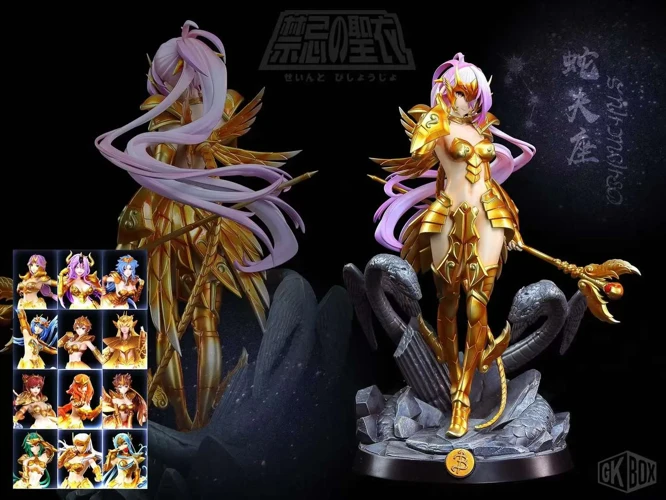
In conclusion, the creation myths in ancient Egypt hold immense importance in understanding the Egyptians’ cosmological beliefs and religious practices. These myths served as a foundational framework for their understanding of the origins of life, the universe, and the gods. They provided meaning, purpose, and order to their existence by explaining natural phenomena, the cycles of life and death, and the afterlife. The creation myths were not just stories but integral components of Egyptian culture, shaping their worldview, values, and rituals. By studying these myths, we can gain profound insights into the ancient Egyptians’ spiritual and philosophical perspectives. The continued relevance of these myths is evident in their influence on astrology and their representation of archetypal themes. Understanding the significance of these creation myths allows us to appreciate the profound connection between spirituality, mythology, and the human experience throughout history. Ultimately, the creation myths of ancient Egypt are a testament to the enduring power of storytelling and the human quest for understanding the mysteries of life and our place in the universe.
Frequently Asked Questions

What are creation myths?
Creation myths are ancient narratives or stories that describe how the world and everything in it came into existence. They often involve supernatural beings, gods, or cosmic forces and serve to provide an explanation for the origins of life and the universe.
Why were creation myths important in ancient Egypt?
Creation myths were of utmost importance in ancient Egypt as they formed the basis of their religious beliefs and cosmology. They helped to establish the divine order, explain natural phenomena, and provide a framework for understanding the roles of gods and humans within the world.
What is the myth of Atum and the primeval ocean?
The myth of Atum and the primeval ocean tells the story of Atum, the first god, emerging from the vast and chaotic waters of Nun. Atum was believed to be the prime creator, responsible for the formation of the universe and the subsequent creation of other gods and humans.
Who is Ra in Egyptian mythology?
Ra is one of the most important gods in Egyptian mythology. He is often depicted as a sun god and was believed to be the creator and ruler of the world. Ra’s journey across the sky during the day and his descent into the underworld at night symbolized the cycle of life and death.
What is the myth of Osiris and the eternal afterlife?
The myth of Osiris centers around the story of Osiris, a wise and just king who was murdered by his jealous brother Seth. Osiris’ wife, Isis, resurrected him and he became the ruler of the afterlife. The myth emphasizes the belief in an eternal afterlife and the importance of mummification and burial rituals.
Did the ancient Egyptians worship multiple gods?
Yes, the ancient Egyptians had a polytheistic belief system and worshipped a multitude of gods and goddesses. Each god had their own unique qualities and played a specific role in the creation and maintenance of the world.
What was the purpose of mummification in ancient Egypt?
Mummification was a complex and meticulous process carried out to preserve the bodies of the deceased for their journey into the afterlife. The ancient Egyptians believed that the soul needed a well-preserved body to reunite with in the eternal realm.
Were creation myths passed down orally or through texts?
Creation myths in ancient Egypt were initially transmitted orally through storytelling and rituals. However, as writing systems developed, these myths were also recorded in hieroglyphic inscriptions, papyri, and temple reliefs, ensuring their preservation for future generations.
What was the significance of the primeval ocean in Egyptian mythology?
The primeval ocean, known as Nun, represented an endless and chaotic expanse of water. It symbolized the state of existence before creation and played a crucial role in many creation myths, as it was from the primeval ocean that life and the gods emerged.
How did creation myths influence daily life in ancient Egypt?
Creation myths deeply influenced the daily life of ancient Egyptians. They provided a moral and social framework, guiding behavior and ethics. The myths also shaped their religious practices, architecture, and art, establishing a strong connection between the divine and the mortal realm.
References
- Ancient Egyptian creation myths
- Ancient Egyptian Creation Myths: From Watery Chaos to …
- Ra, The Creator God of Ancient Egypt – ARCE
Frequently Asked Questions

What is the significance of creation myths in ancient Egypt?
Creation myths in ancient Egypt serve as explanations for the origins of life and the universe. They provide a foundation for religious beliefs and rituals, shaping the cultural and social fabric of ancient Egyptian society.
Who is Atum and what is his role in Egyptian creation myth?
Atum is one of the key deities in Egyptian mythology, associated with creation and the formation of the universe. He is believed to have emerged from the primeval ocean and used his divine powers to bring the world into existence.
How did Atum create gods and humans?
According to Egyptian mythology, Atum created the gods and humans through his own powers of self-creation. He brought forth other deities from within himself, and through his divine breath, he gave life to humanity.
What role does the primeval ocean play in the myth of Atum?
The primeval ocean represents the chaotic and formless state of existence before creation. In the myth of Atum, the primeval ocean is the primordial element from which Atum emerged and used to shape and give birth to the physical world.
Who is Ra and how does he relate to the sun?
Ra is the powerful sun god in ancient Egyptian mythology. He is often depicted as a falcon-headed deity and is associated with the sun as its personification. Ra represents the life-giving force of the sun and is considered the creator of the world.
How did Ra become the supreme creator?
Ra gained prominence as the supreme creator by absorbing the attributes and powers of other deities over time. Through this process of assimilation, Ra became the ultimate creator and ruler of the gods, ensuring the continuity of life and order in the universe.
What is the significance of Ra’s daily journey and the cycle of life?
Ra’s daily journey across the sky represents the cycle of life, death, and rebirth. As the sun rises each day, it symbolizes the awakening of life, while its setting signifies the end of a cycle. This continuous journey of Ra reinforces the belief in the eternal nature of existence.
How do humans sustain Ra’s power?
In ancient Egyptian mythology, humans play a vital role in sustaining Ra’s power through ritual offerings and prayers. By honoring and worshipping Ra, humans contribute to the cosmic balance and ensure the sun’s daily journey and the life-giving properties it brings to the world.
Who is Osiris and why is he significant in Egyptian mythology?
Osiris is a major deity in Egyptian mythology, associated with resurrection, fertility, and the afterlife. He is also the divine king, representing order, harmony, and justice. Osiris serves as a symbol of eternal life and embodies the belief in the cyclical nature of existence.
What is the role of mummification and burial rituals in the myth of Osiris?
In the myth of Osiris, mummification and burial rituals are of great importance. These practices are believed to enable the deceased to undergo a process of transformation, similar to that of Osiris. Mummification preserves the body and prepares the soul for the journey to the afterlife, ensuring eternal life in the divine realm.







